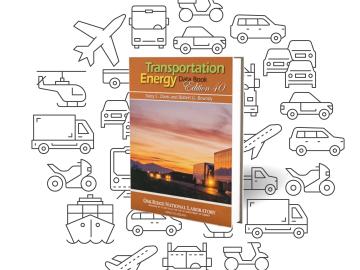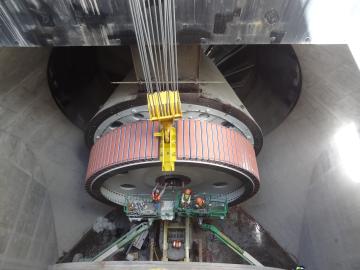
Filter News
Area of Research
- Biology and Environment (16)
- Biology and Soft Matter (1)
- Computational Biology (1)
- Computer Science (1)
- Electricity and Smart Grid (1)
- Energy Science (36)
- Functional Materials for Energy (1)
- Fusion and Fission (3)
- Isotopes (2)
- Materials (27)
- Materials for Computing (3)
- National Security (9)
- Neutron Science (8)
- Nuclear Science and Technology (2)
- Sensors and Controls (1)
- Supercomputing (16)
News Topics
- (-) Artificial Intelligence (15)
- (-) Biomedical (11)
- (-) Grid (16)
- (-) Materials Science (26)
- (-) Mercury (2)
- (-) Security (11)
- (-) Transportation (17)
- 3-D Printing/Advanced Manufacturing (17)
- Advanced Reactors (5)
- Big Data (10)
- Bioenergy (21)
- Biology (29)
- Biotechnology (3)
- Buildings (16)
- Chemical Sciences (15)
- Clean Water (6)
- Composites (6)
- Computer Science (34)
- Coronavirus (9)
- Critical Materials (5)
- Cybersecurity (10)
- Element Discovery (1)
- Energy Storage (27)
- Environment (39)
- Exascale Computing (8)
- Fossil Energy (1)
- Frontier (10)
- Fusion (11)
- High-Performance Computing (16)
- Hydropower (8)
- Irradiation (1)
- Isotopes (10)
- ITER (2)
- Machine Learning (10)
- Materials (37)
- Microscopy (18)
- Molten Salt (4)
- Nanotechnology (18)
- National Security (17)
- Neutron Science (22)
- Nuclear Energy (20)
- Partnerships (8)
- Physics (19)
- Polymers (10)
- Quantum Computing (7)
- Quantum Science (12)
- Simulation (6)
- Space Exploration (6)
- Summit (9)
Media Contacts

It’s been referenced in Popular Science and Newsweek, cited in the Economic Report of the President, and used by agencies to create countless federal regulations.

Researchers at ORNL are teaching microscopes to drive discoveries with an intuitive algorithm, developed at the lab’s Center for Nanophase Materials Sciences, that could guide breakthroughs in new materials for energy technologies, sensing and computing.

Oak Ridge National Laboratory researchers determined that for every 5 miles per hour that drivers travel over a 50-mph speed limit, fuel economy decreases by 7% and equates to paying an extra 28 cents per gallon at current.

A team of researchers has developed a novel, machine learning–based technique to explore and identify relationships among medical concepts using electronic health record data across multiple healthcare providers.

A study led by researchers at ORNL could help make materials design as customizable as point-and-click.

A new Department of Energy report produced by Oak Ridge National Laboratory identifies several supply chain must-haves in maintaining the pivotal role hydropower will play in decarbonizing the nation’s grid.

Several electrolyte and thin-film coating technologies, developed at Oak Ridge National Laboratory, have been licensed by BTRY, a battery technology company based in Virginia, to make batteries with increased energy density, at lower cost, and with an improved safety profile in crashes.

ORNL biogeochemist Elizabeth Herndon is working with colleagues to investigate a piece of the puzzle that has received little attention thus far: the role of manganese in the carbon cycle.

When Andrew Sutton arrived at ORNL in late 2020, he knew the move would be significant in more ways than just a change in location.

Unequal access to modern infrastructure is a feature of growing cities, according to a study published this week in the Proceedings of the National Academy of Sciences


